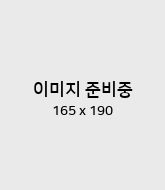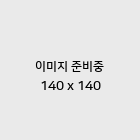Journals

Journal of East-Asian Urban History
- eISSN
- 2713-9484
- doi prefix
- https://doi.org/10.22769/
- Issues per year
- semi – annual (2)
- Indexing
- Not applicable
- Country, Region
- Korea/ Japan/ China/ East-Asia
Aims & Scope
- Aims
The Journal of East-Asian Urban History (JEUH) is the organ of the East-Asian Society for Urban History, which was founded on June 23, 2018 by The Korean Society for Urban History(Korea), Society of Urban and Territorial History (Japan), and The Shanghai Association of History (China). In addition to the papers on cities in East Asia, Urban History Researchers in East Asia will be able to submit papers that try to take an independent view of cities.
Archives
Current
-
The Modern Cities of East Asia Arnold J. Toynbee Had Seen in 1929
- Young-Suk Lee
- DOI : https://doi.org/10.22769/JEUH.2019.1.1.7
-
Change of the Old City by the Modernization
- Osamu Nakagawa
- DOI : https://doi.org/10.22769/JEUH.2019.1.1.25
-
The Cultural Difference between Beijing and Shanghai and Its Influence on New Culture Movement
- Xiong Yuezhi
- DOI : https://doi.org/10.22769/JEUH.2019.1.1.55
-
The Theory of Tokyo in the 20th Century as a Garden City
- Naito, Keita
- DOI : https://doi.org/10.22769/JEUH.2019.1.1.99
-
Studies of Building layout and ground use in the early days of Japan Women’s College: Campus design for private colleges in a modernizing Japan
- Suzuki, Maho
- DOI : https://doi.org/10.22769/JEUH.2019.1.1.135
-
Reading from transition of Beijing block planning and collective housing in the 1950s
- Shao, Shuai
- DOI : https://doi.org/10.22769/JEUH.2019.1.1.155
-
How could make people work for everyone? City Governance to activate social services in 1950's Shanghai neighborhood
- Sohn, Jang-Hun
- DOI : https://doi.org/10.22769/JEUH.2020.2.1.65
-
The Dilemma of Cultural Propaganda and Academic Research: New historical drama
- Zhang Sheng
- DOI : https://doi.org/10.22769/JEUH.2020.2.1.87
-
Japanese Broadcasting in Shanghai during the Periods of Solitary Island and Occupation: A Case Study on the Great Eastern Broadcasting Station (Daito Hoso Kyoku)
- Ge Tao
- DOI : https://doi.org/10.22769/JEUH.2020.2.1.113
-
Sense of Place In Wakamatsu Port After 1887, As Seen From The Sunken Coal (Chinbotsu-tan) Problem
- Torikai, Kaoru
- DOI : https://doi.org/10.22769/JEUH.2020.2.1.129
-
Urban History and ‘Geohistory’ of E. W. Soja
- Hong, Yong-Jin
- DOI : https://doi.org/10.22769/JEUH.2020.2.1.163
-
Hochschild, A. R. (2016). Strangers in their own land: Anger and mourning on the American right. New York: The New Press.
- Soomin kim
- DOI : https://doi.org/10.22769/JEUH.2020.2.1.191
-
Contents
- Journal of East-Asian Urban History
- DOI :
-
Voices from Public Assembly Trumpets: Sound Tool and Student Movement in Republican China
- Xu Ziming
- DOI : https://doi.org/10.22769/JEUH.2020.2.2.201
-
Contents
- Journal of East-Asian Urban History
- DOI :
-
Social Structures, State Policies, and Negotiation in the Making of Urbanity: East and Southeast Asia in Comparative Historical Perspectives
- Kai Yiu Chan
- DOI : https://doi.org/10.22769/JEUH.2021.3.1.7
-
Newchwang before Newchwang, c1368-1863
- Kai Yiu Chan
- DOI : https://doi.org/10.22769/JEUH.2021.3.1.21
-
Urban Impermanence on the Southern Malay Peninsula: The Case of Batu Sawar Johor (1587-c.1615)
- Peter Borschberg
- DOI : https://doi.org/10.22769/JEUH.2021.3.1.57
-
Water Supply and Samurai Residence in the Castle Towns during the Edo Period: The Creation of the Modern Urban Dwellers
- Fujimura, Satoshi
- DOI : https://doi.org/10.22769/JEUH.2021.3.1.83
-
From Prominent 17th Century Colonial Dutch Settlements to Modern Indonesian Urban Centers? The Different Destinies of Banten, Ambon, Jakarta, and Malacca and their Cultur…
- Dhont, Frank
- DOI : https://doi.org/10.22769/JEUH.2021.3.1.121
-
The Verandah: Hong Kong’s Contribution to a Southeast Asian and China-coast Urban Design
- David Faure
- DOI : https://doi.org/10.22769/JEUH.2021.3.1.139
Indexing
Not applicable
Editors
-

- Editor in Chief Editor-in-Chief
- Editor-in-Chief/ Journal of East-Asian Urban History
-

- The Editor Editor
- Editor/Journal of East-Asian Urban History
Editorial Board Members
- Members
- East-Asian Society for Urban History
Notice
Contact Information
- Journal of East-Asian Urban History
-
Mailing address: East-Asian Society for Urban History, Education Science Bldg, Konkuk University 120, Neungdong-ro, Gwangjin-gu, Seoul, 05029, Republic of Korea
Tel: 02-701-3577
Fax :
Email Address : rhj@harrisco.net
If no response to your email is received within 72 hours please email us at :
rhj@harrisco.net




